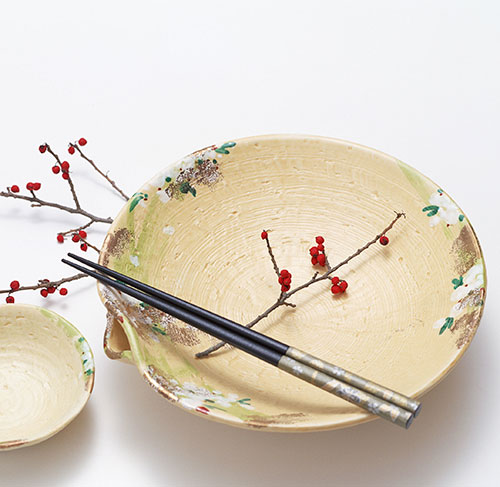
A lot of people who come to this site or JustBento are here because they think Japanese cooking is very healthy. By and large it is, but, like any cuisine it's not 100% healthy by any means. I've been thinking about what parts of Japanese cuisine are indeed healthy, and what aren't, following up on my previous posts about sushi here and here. Here's what I have come up with.
Filed under:
essays japanese health and weight loss japanese culture thinking
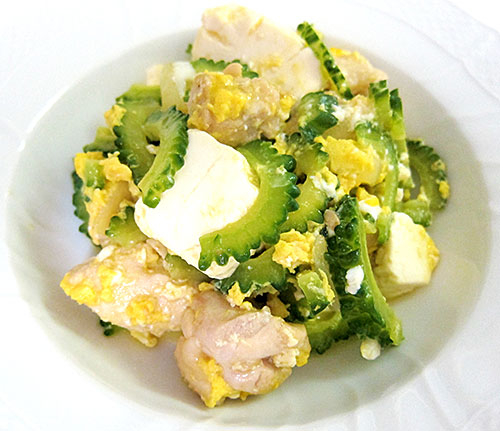
About bitter gourd or bitter melon, called nigauri in Japanese and goya or go-ya- in Okinawan. Plus, a recipe for the most homey of Okinawan dishes, goya chanpuru or champuru.
Filed under:
japanese tofu summer pork okinawa eggs
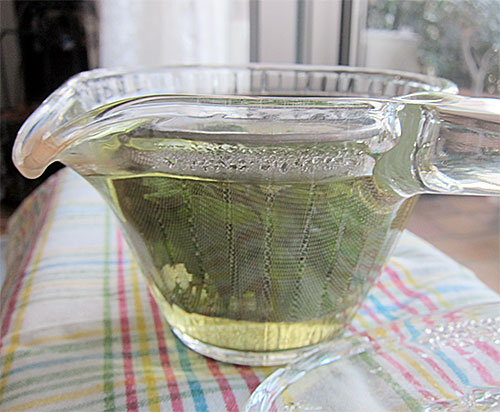
Fresh shiso leaf tea for hot summer days.
Filed under:
japanese tea herbs
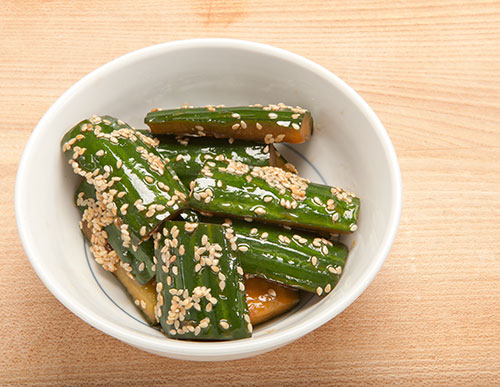
The weather has finally gotten warm around these parts after a very cold spring, and we're eating more summertime food now. This is one of our favorite salad-type dishes. The sesame dressing is very versatile, and you can use it for any manner of things, but here I've just used it with cucumber.
Tip: the longer you let it rest before serving, the saltier the cucumber will get, so if you want to serve it as a salad you'd want to combine the cucumber with the dressing just before serving. On the other hand, if you let it marinate in the refrigerator the cucumber becomes assertive enough to eat with plain rice as part of a Japanese meal.
Filed under:
japanese vegetarian summer vegan salad
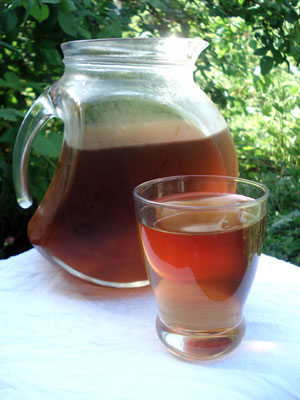
From the archives: We apparently had the coldest spring on record in this area. It's finally getting warm again, and today I started my first batch of mugicha this year. Here is a slightly updated article about mugicha, or toasted barley tea, my favorite non-alcoholic summer drink. This was originally published on May 10, 2007, and updated on June 10, 2008. I've added another update at the end.
When we were growing up, my mother frowned upon most sugary drinks for us kids. So things like sodas were generally not stocked in the house - an ice-filled cup of Coke was a great treat whenever we went out to eat. Things like Calpis, or when we lived in the U.S. Kool-Aid, were strictly rationed. The cool drink we always had in the refrigerator was mugicha, or barley tea. Even when we lived in White Plains, New York, there were always a couple of jugs of mugicha in the large American refrigerator.
Mugicha is traditionally made by briefly simmering roasted barley grains. It has a toasty taste, with slight bitter undertones, but much less so than tea made from tea leaves. To me, it's much more refreshing to drink than plain water.
My anti-sugar mother always made sugarless mugicha, but my younger self craved the sweetened mugicha that most of my friends' mothers seemed to make. I always begged my mother to make sweet mugicha, but she always refused. Some day, when I am the one making mugicha, I'll put all the sugar I want in it, I used to think. So, when I reached my teen years, and my mother was back working full time, I used to pour rivers of sugar into the mugicha. My little sisters loved it. I'm not sure if it made them more hyper than usual, though I have vague memories of my younger sister sitting on my head when she got bored.
Now that I am nominally an adult, I much prefer unsweetened mugicha. I'm growing more like my mother as I get older, a rather scary thought.
Filed under:
drink japanese lighter summer tea

There are several Japanese recipes that I take so much for granted that I'm sure I've uploaded to this site already...but I haven't. Shira-ae or shiraae, a classic tofu paste that was born from the Zen Buddhist vegetarian cuisine called shojin ryouri, is one such recipe.
It's often described as a 'dressing', but that doesn't adequately describe its thick, rich texture. It's usually mixed with various shredded vegetables, but there's nothing stopping you from mixing it with poached and shredded chicken, or ham, or toasted pine nuts, or anything you like. The rich taste comes from ground sesame seeds and a touch of miso. The key to the texture is to drain the tofu very well.
Filed under:
japanese tofu vegan washoku shojin
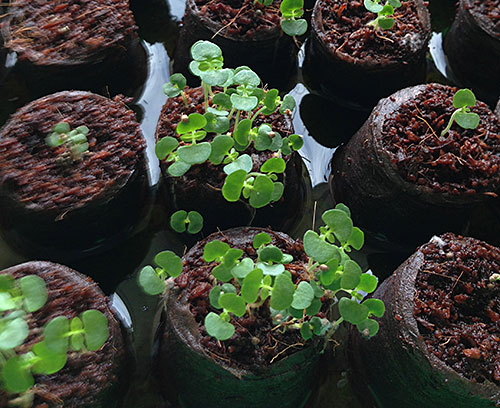
I posted a photo of my sprouted shiso seeds on Instagram this morning, which led to several people asking how to grow it. Although I've written about growing shiso a couple of times before, I have never described the procedure. So, here it is!
Filed under:
japanese how-to gardening herbs